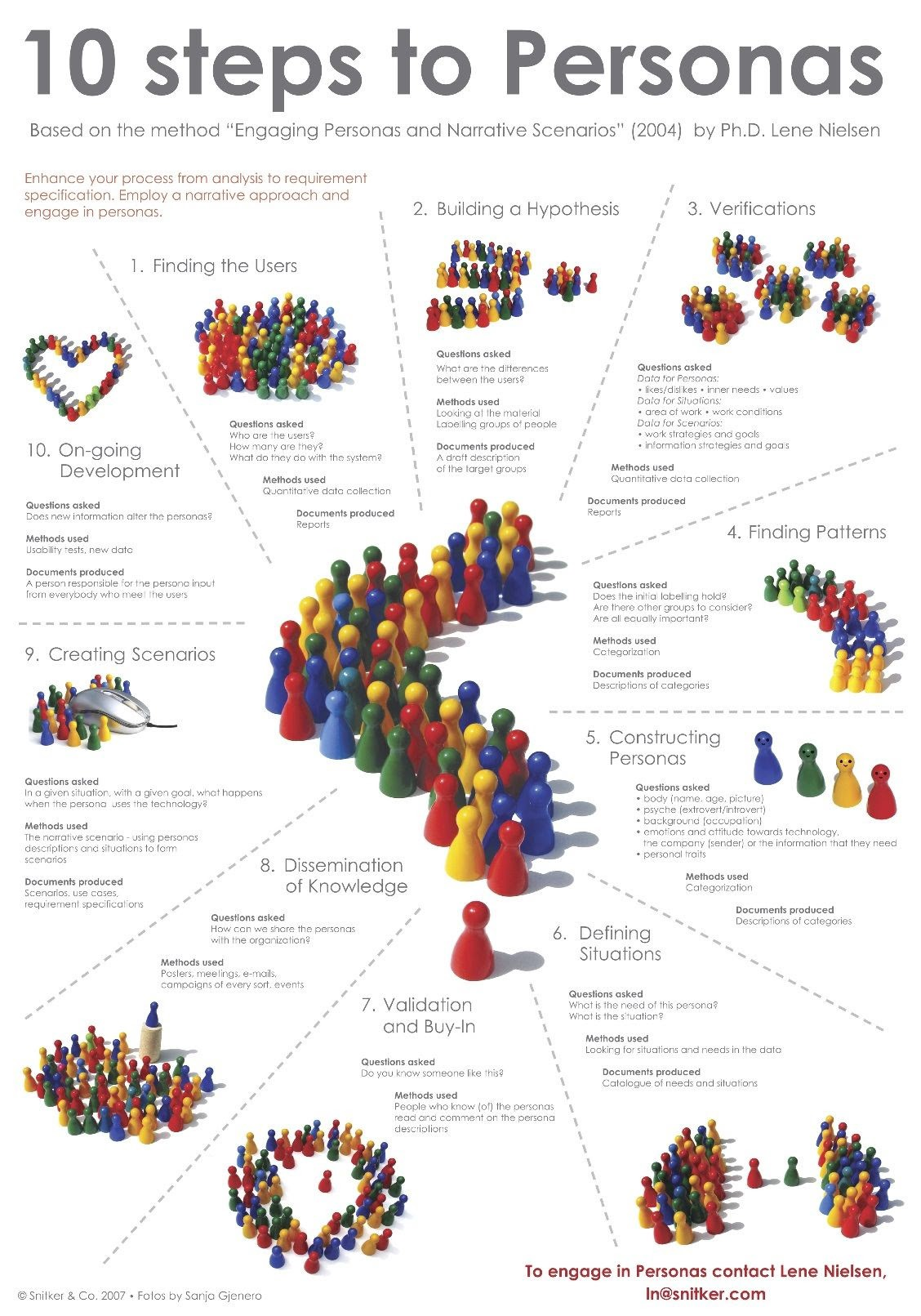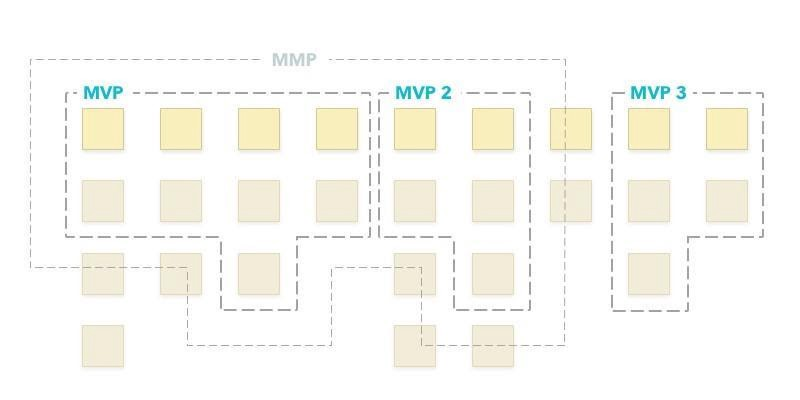What is an MVP in business, and why is it necessary?
Let’s take your MVP to space!
Startups have become the cornerstone of growth and innovation. There is always a lot of buzz around a startup, and none is more prevalent than in the technology sector.
But a successful startup requires every advantage to succeed in a highly-saturated market. So what value does an MVP (or Minimum Viable Product) bring to the table?
This article will cover what’s an MVP, the importance of MVP in business and why it is a vital tool to have in your arsenal as the new kid on the block.
Table of Contents
- What is a Minimum Viable Product (MVP)?
- Proof of Concept vs. Minimum Viable Product
- Why create a Minimum Viable Product?
- The MVP’s position in business
- Advantages of creating an MVP
- How to develop an MVP
- What role does market research play in MVP development?
- How to identify the goal and the main use of the MVP?
- Which features to choose for the MVP?
- Building the MVP: Things to consider
- Conclusion
What is a Minimum Viable Product (MVP)?
MVP stands for “minimum viable product”, and it refers to the first step in the development process for your new business concept. Essentially, an MVP is the first-draft version of your product that is both usable and saleable.
It is based on a book by Eric Reis titled “The Lean Startup”. The underlying notion is relatively straightforward: it is preferable to spend time determining the minimum requirements for getting a product out into the marketplace, rather than investing large amounts of time developing a detailed business plan and painstakingly carving out and shaping the perfect product.
Proof of Concept vs. Minimum Viable Product
Despite the fact that these concepts are related, they are not the same.
A proof of concept (PoC) is a demonstration of a method, technology, or idea in its practical application. In order to accomplish this, a small sample or prototype is created, which may only have a portion of the final product’s functionality. Thus, they certify that the chosen method of creation or technology can be successfully implemented in the real world.
The MVP is not a proof of concept, but rather a fully functional product.
The MVP is a product that provides the bare minimum of a product’s functionality. Furthermore, the product should perform as best as possible and all necessary fundamental functions should solve the targeted problem of the consumer.
Therefore, if an MVP is being presented, the prototype must be a fully functional one. This will enable clients to make a well-informed purchasing decision, as consumers will have a clear understanding of the final product experience.
Why create a Minimum Viable Product?
As part of his Lean Startup methodology, Eric Ries defines the minimal viable product as the most cost-effective way to collect the largest amount of validated learning about its customers.
A company might adopt the development and release of an MVP to satisfy the aims of its product team, which hopes to:
- Launch a product as soon as possible.
- Develop your product after getting feedback from actual customers instead of using a significant expenditure for a full product launch.
- Discover what the company’s target market responds to and what they do not.
- Building a minimum viable product also helps you avoid wasting time and money on a product that might not succeed.
An MVP not only lets your company test a product’s viability without creating the product in its entirety, but it also allows you to reduce the time and resources you might otherwise put into creating a product that might fail.
The MVP’s position in business
Most of us are aware that Amazon started as an online bookstore. Though you may not know that Amazon's founder Jeff Bezos began his business by purchasing books from distributors and shipping them to clients whenever an order was placed on his online store.
Because of the enormous volume of book sales, it made it logical to continue adding more products to the store, buying warehouse space, and providing each user with a customized experience on the website itself.
To stay ahead of the competition in today’s cut-throat business environment, it is critical to release products as quickly as possible within budget to test and validate your assumptions. And this is where an MVP fits in.
Advantages of creating an MVP
Concentrate on establishing the foundation
An MVP app is focused on a single concept and does not include any other features. The MVP strategy is consistent with the lean startup philosophy of developing the best product possible with the least resources in the shortest amount of time. This can help keep the cost of your MVP down and test with the least amount of risk.
The possibility of early testing
It is beneficial to determine whether or not your idea will work from the beginning without investing your entire budget.
Gather user intelligence and customer feedback
The MVP allows you to learn about your potential users’ opinions and how they would like to see your final product presented.
Allows for market validation to take place
An MVP can assist you in determining whether or not your app is appropriate for your target market. It should give users a good impression of your brand and demonstrate how your project is different from others in the same category.
Developing your app will take less time
Due to the reduced development time, app development costs are reduced as well. The quicker your mobile app is made available to users, the faster you will receive feedback. As a result, you will be able to improve your software while simultaneously releasing an updated version.
It is cost-effective
This is still another significant advantage as it prevents you from devoting all of your energy to things that may or may not work right away. According to research, the mobile app market experienced significant growth in 2017.
Because of concerns with their user interfaces and poor performance, only a small number of apps are actually downloaded from the many available on the Google Play and Apple iOS stores. It is recommended that you design an MVP because it is a simple way to improve your mobile development strategy.
How to develop an MVP
The simple process outlined below can assist in the development of a Minimum Viable Product:
- Conduct in-depth market research.
- Take a moment to think about important queries, such as “what problem does your product solve?” In addition, “how does your product function?” “Who is your product’s target audience?” “What makes your product appealing to consumers?”
- Design a user flow and user experience (UX) — specify the steps of the procedure.
- Make a checklist of all the qualities you want to have.
- Continue to work on developing your MVP.
MVP and Lean are terms that are becoming increasingly prominent in today’s fast-paced corporate world. A significant advantage of startups is that they teach entrepreneurs how to develop a long-term, profitable enterprise. They can scientifically verify their learning by carrying out a variety of experiments on themselves. MVP is a strategy for assessing progress in the face of uncertainty and ambiguity.
What role does market research play in MVP development?
40% of startups fail because there is no demand in the market. It is vital to determine the needs of the market and confirm that your product will serve its purpose and bridge a gap in the market to ensure its success. Competition analysis is becoming more important than ever before, as the complexity and cost of project development and promotion are directly proportional to the amount of competition present. Furthermore, the trick is not to underestimate the cost of marketing.
When it comes to marketing, the strategy and price of promotion are heavily influenced by the complexity of the customer acquisition and engagement process. In reality, this can only be understood after a series of tests, or at the very least, obtaining some form of preliminary market feedback. When developing an MVP, it is critical to strike a balance between cost and quality for the project. A common misconception is to have the project embody a minimal approach, while this usually ensures that the balance between time to market and cost of project is achieved, consumers tend to criticize the raw test version and developers end up dismissing the project as a whole. Market research provides a more accurate estimate of the MVP as well as an understanding of the budget for promotion, without which your MVP will never take off.
The importance of market research
Keep in mind that the main principle of MVP is to create a product that people will want to buy as quickly and inexpensively as possible. In this case, it is recommended to follow the model suggested by Jussi Pasanen: rather than creating layers one by one, it is preferable to make at least a minimal piece on each layer.
Market researchers hunt for information about individuals or companies that are competing in market industries They then examine it to have a deeper understanding of the needs of your potential clients. Customers’ demands are studied using market surveys, which are conducted on your behalf. Market research guarantees that your product meets the needs of your target audience.
Qualitative Research Methods
The qualitative method conducts extensive studies on potential clients. Human wants, and thoughts are important, but it is equally important to understand “why” and “what” they think.
It is critical to pay close attention to the “why” behind client behavior when conducting market research. When you are motivated to launch a product, you should first write a business plan. Face-to-face interviews and group discussions can be used to get information from people. They are the most effective methods of receiving detailed feedback. Inquire about things like:
- Is it simple to operate?
- Is the design visually appealing?
- In terms of the packaging, what are your thoughts?
- Is the price reasonable?
Quantitative Research Methods
Surveys and consumer questionnaires are two examples of quantitative research methods. It is useful for obtaining feedback from potential clients regarding a product or service. Inquire about their shopping habits by asking questions such as “how often do you go to a retail store?” “What products do you buy”? “Why do you buy them?” “At which store do you do your shopping?”
A clearer understanding of how consumers act can be obtained through quantitative research. The information gathered can also be used as a useful guide in making business decisions in the future.
Competitor Research
Competitor research is the process of identifying and analyzing the strengths and shortcomings of your current and potential competitors. Also included are tactics for identifying and avoiding potential opportunities and hazards.
Following this, you can come up with new features and techniques that are effective. Make sure that they would be beneficial in attracting clients more swiftly than your competitors. We recommend conducting a SWOT analysis (Strengths, Weaknesses, Opportunities, and Threats) of your business.
How to identify the goal and the main use of the MVP?
Create Personas
While it used to be the case that designers would use their preferences to influence the creation of products, services, and solutions, they now focus on researching trends and patterns in data to design for people. Personas aren’t based on actual people, but you can create personas from the details of real people using collected data. While facts remain relevant, personas offer the human touch. Making personas out of the general population or outliers (e.g., those on the extreme end of the spectrum) can help you comprehend your research data and design for a wider range of people. Another name for personas is composite characters or model characters.
Personas offer usable archetypes to help you evaluate your design’s growth. Creating personas will enable you to get the proper answers to your questions and make decisions based on your user personas. “For instance, ‘How would Peter, Joe, and Jessica respond and act in response to the given context and features X and Y?’” “How do Peter, Joe, and Jessica feel, think, act, and speak?” and “What needs are we trying to fulfill to the
Step-by-step process to creating engaging personas
1. Gather data
Gather as much information as possible about the users. Conduct in-depth user research with actual members of your target user group. The research phase, also known as the empathize phase, is the initial phase in Design Thinking.
2. Construct a hypothesis
Based on your initial research, you will develop a broad understanding of the various users within the project’s target area, including how users differ.
3. The hypothesis is accepted universally
The objective is to substantiate or refute the first hypothesis on the differences between users. This can be accomplished by presenting the hypothesis to project members and comparing it to existing knowledge.
4. Assign a number
You will determine the final number of identities to generate. While you will almost always want to construct multiple personas for each product or service, you should always focus on a single persona as your primary emphasis.
5. Provide details about the personas
The purpose of developing personas is to enable you to build solutions, products, and services that are tailored to your users’ requirements and ambitions. Ensure that you explain personas in a way that demonstrates sufficient understanding and empathy for the users.
Details on the user’s education, lifestyle, interests, values, objectives, needs, limitations, wants, attitudes, and patterns of behavior should be included. Add a few imaginary biographical information to help flesh out the persona.
Assign a name to each of your personalities and create a description for each persona.
6. Create scenarios or situations for each of your personas
This enticing persona technique is geared on developing scenarios that detail answers. You should identify various specific instances that could result in the utilization of the product or service you are designing for this goal. In other words, scenarios begin with situations. You may breathe life into each of your personas by developing conditions in which they take on a user’s role. Scenarios typically begin by placing the persona in a certain environment and presenting them with a problem they wish to or are required to solve.
7. Obtain organizational approval
It is critical to involve as many team members as possible in the construction of the personas, and it is critical to gain the acceptance and recognition of all participants in the various processes. To do this, you can pick between two strategies: soliciting participants’ input or allowing them to participate actively in the process.
8. Disseminate information
To ensure that all participants use this method, the persona descriptions should be distributed widely. It is critical to decide early on how you will share this information with individuals who were not directly involved in the process, future new workers, and potential external partners. Dissemination of knowledge also includes how project participants will gain access to underlying data.
9. Everyone prepares scenarios
Personas are worthless in and of themselves; until they are integrated into a scenario — the story of how the persona uses a future product — they have no actual value.
10. Continue to make adjustments
The final stage is to imagine the persona descriptions in their future lives. You should regularly edit the descriptions. The descriptions may change as new information and facets become available. Occasionally, you may need to revise the descriptions of current personas, create new personas, or delete obsolete personas.

Which features to choose for the MVP?
Simplify the Personas
When developing a new product, it is critical to conduct research first: study the market, speak with potential clients, and develop personas. However, when developing an MVP, you cannot focus on all personas simultaneously; your product cannot solve all problems for all people. Rather than that, concentrate on developing a solution for a small number of personas that cover a single complete flow and observe how it all works out.
If you believe that covering all of your user personas in the MVP is necessary, something is amiss, either with the personas you’ve identified or with your perception of MVP. In general, your personas should represent quite diverse groups of people, which cannot be adequately represented in a single MVP. Rather than that, your MVP will mitigate risk by validating your assumptions early on before heavily investing in design and development. It’s preferable to establish a market quickly and make changes based on feedback from existing users than to work with a large group of users who will never help you.
Uber is a good example of this, as the company initially targeted city commuters with its app. The concepts of large group rides (UberXL), cost-conscious commuters (UberPool), and ride-sharing (Fare Splitting) emerged much later and were motivated by real-time user needs.
In this sense, the MVP is an excellent way to empower users to speak for themselves and tell you what to build next.
Necessities vs. Desires
Now that you’ve chosen a persona to work with, it’s time to choose the features you’ll develop. Here, as with the persona selection, it is critical not to stray from the path you have chosen. Begin by asking yourself and your team the following question about each feature: “Does the user require this feature in order to use the product and resolve their issues, or do they want this feature?”
In the first case, the features are critical to resolving the issue at the heart of your product, whereas in the second, they are optional features that users would find useful but could live without.
For instance, if you’re running a delivery app, features like selecting a location, providing details about the delivery time etc. whereas viewing the delivery person’s profile photo is a nice, but not necessary, feature.
Consider the time required to market
Your product could be a game-changer, something the market hasn’t seen before, or an improved version of a well-known product. And regardless of which category you fall into, it is critical to reduce time to market and arrive a day sooner rather than later. As a result, when it comes to your users’ desires, you may want to prioritize quicker and easier features to deliver while maintaining the value they add.
The same holds true for design: avoid overcomplicating it. The most innovative designs will take a long time to develop, and the development team will spend additional time building them. Therefore, you’d be wise to stick to something cool yet simple!
Iterate indefinitely
Your MVP release is only the beginning. What you want to do here is to continue iterating by incorporating new features from additional personas to create a Minimum Viable Product with Minimum Viable Features (MVF). These can be separated into different MVPs to set up, with your market-ready product being a combination of a few MVPs with well-tested and verified features.

Image Source
Building the MVP: Things to consider
Startups must begin with a minimal offering to eventually deliver a complete one, and professional technical counsel from the outset is crucial for your MVP.
Suppose you can’t make informed decisions (software design, data modeling, technology selection, scalability, problem-solving, and recognizing potential bottlenecks and hazards in the architecture …). In that case, you will need to source some help.
You are probably considering hiring a chief technology officer or CTO. However, it is difficult for fledgling companies to acquire excellent CTOs, and keeping them is expensive.
So, what do you do?
Here are the various factors to consider when deciding how to develop your MVP: the role of a CTO, the fees connected with this position, and when it’s most advantageous to outsource.
What is the CTO of a startup responsible for?
An executive who oversees the technology and strategy involved in a project is called a CTO.
CTOs need to be able to design long-term strategies and allocate budgets to achieve success in the market.
The cost of a startup CTO
You can save both time and money by employing a full-time CTO for your firm. You could even hurt your chances of success with this.
High salary
One of the challenges we discussed earlier is the high expense of recruiting a startup CTO. Since the tech-based organizations that utilize them rely on CTOs, they are expensive executives. This is a disadvantageous situation for a growing organization that can’t afford them.
Wasted time
Not having a CTO that is the best fit for your business could make you fall behind your competition when it comes to producing your MVP. You don’t want to spend time and money looking for the appropriate person; you want to concentrate on your product.
Risk of team breakup
It is also important to point out that a top-level executive leaving in the beginning stages of your project may cause your company to stagnate.
Startups with a high risk of failure are likely not to attract suitable CTO candidates, especially those who are not afraid of the possibility of failure. When the going gets difficult, a novice CTO may be forced to leave the project or maybe be fired.
When outsourcing, consider working with a digital product agency, otherwise you might like to look into hiring a digital product agency, this will allow you to take advantage of vast stores of industry experience and specialized insights for a fraction of the expense.
Due to the versatility of their skilled workforce, digital product agencies have time and numbers on their side. The following are among the possibilities:
Experience and know-how
Digital product agencies can provide your business with the knowledge you need to overcome the challenges of initial growth and long-term success. The agency provides various guidelines for design, including a firm grasp on product-market fit, optimal features, and other factors.
Skilled staff
As opposed to a traditional agency, a digital product agency is in a better position to provide the guidance that startups need due to its broad portfolio of customers and projects, many of which are located in the digital realm. An agency team with advanced digital product development skills can assist in molding your MVP into a more refined solution that doesn’t require extensive market research at the beginning.
Industry insight
A team of knowledgeable specialists can address the myriad issues that can appear in a budget-conscious industry, such as problems with niche budgeting and legal constraints, in a way that will free up the fundamental skills of a full-time CTO without hurting a company’s fiscal flexibility.
Conclusion
An MVP is necessary for any startup to have a successful launch and create a competitive edge. It helps focus the development while minimizing potential risks and keeping costs in check.
Developing an MVP first is key to proving your startup’s idea can hold its weight in the marketplace. Having an MVP that has been tested and verified with real-world use can show potential investors the feasibility of your idea and give them confidence in your intent for growth.
Check out our guide to estimating MVP cost next.




